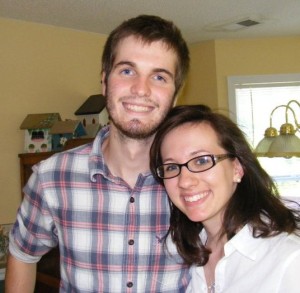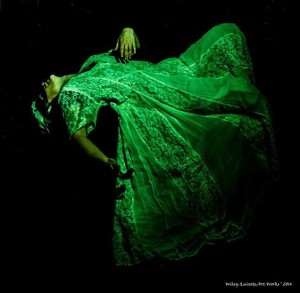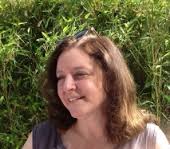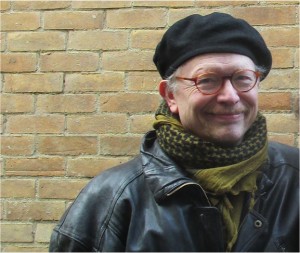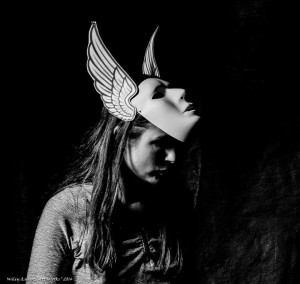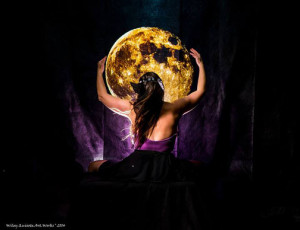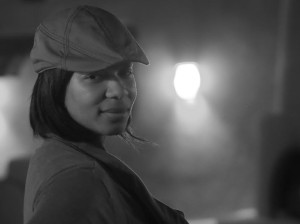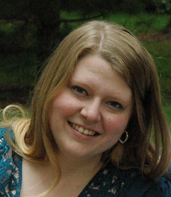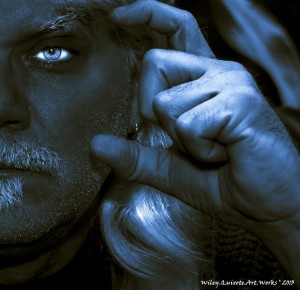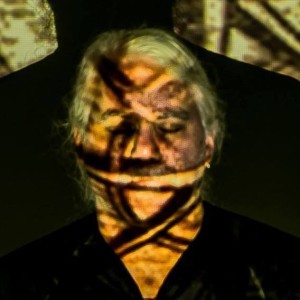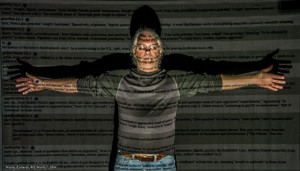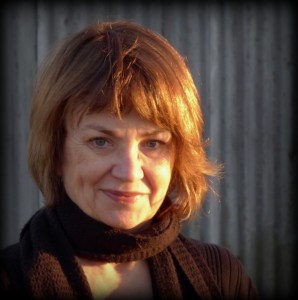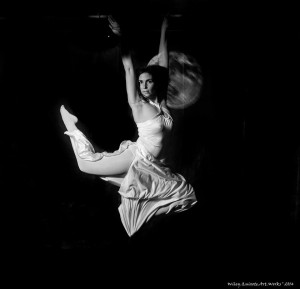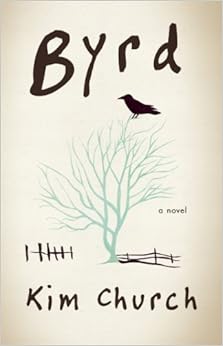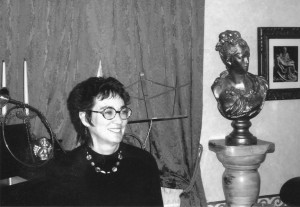
Kyle’s poem “Labradorite” appears in the April 2014 issue.
Barbara Daniels: Can you tell us about the title of your new book, Wildwood? I know it refers to a New Jersey shore town, but does it mean more than that, maybe all the wildness in your family or that you’ve encountered in your travels? Do the wonderful bars in the book, such as The Ugly Mug and Smitty’s Bar at the New Jersey shore, imply some wildness in you as well?
Kyle Laws: The name Wildwood has always had a special meaning to me, much more than the town that goes by that name. I grew up on the Delaware Bay, in a town first known as Wildwood Villas that was later shortened to the Villas. It was carved out of land held by the descendants of whaler yeoman families that had settled the area in the late 1600s and early 1700s. It was a “wild,” cut-off part of New Jersey, which is why it was so pristine when I was growing up. Many of the original trees had never been cleared, and some advertisements for the lots made a point of them being wooded. So, it was not only wild in its cut-off way, but wooded as well, which made it much more suited to the name of Wildwood than the barrier island on the ocean side. And, unlike most of the other residents, we lived there all year round in a house converted from a saloon. So, if bars show up repeatedly throughout the work, it’s because I grew up in the remnants of one. Liquor had been stored in the basement where I played hide-and-seek. And because story-telling was so much a part of my mother’s personality, I grew up with that history repeated over and over. The bar, owned by one of the original thirty-five whaling families, was lost in a tax sale.
From there I came west to Colorado, which certainly fits with being wild and wooded. It’s the extremes of landscape that have always been my home.
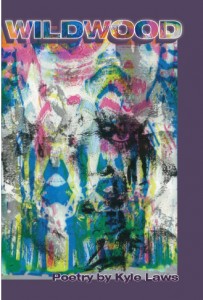
Barbara: Your book portrays fascinating people—Kay, Ordelia, and your father among others. Did growing up around these people influence your sense of the dramatic or inspire you to depict extremes of emotion?
Kyle: I think people have always sought places that were large enough to contain them, where something besides themselves was in charge. The West originally drew people who didn’t fit in the polite society of the East, who had a respect for the land and the native inhabitants. Of course that changed. The personalities in my family didn’t seem so extreme when compared to a nor’easter. And the overwhelming sense of their own morality (although a sexually-charged one) was not out of place in resistance to the culture of the town. It was two places, one in winter, one in summer. Winter was poor and lonely, but so pure in its way, so stripped of artifice. Summer was like a carnival. To be able to live well in those extremes takes a certain type of personality. And our family had it. It was a place where you could be yourself, no matter what that was. Who were you going to offend? The horseshoe crabs, the seagulls, the families who barely got by because of lack of work?
Barbara: In what ways are you a poet of place–the mid-Atlantic region where you grow up and the American West, where you live now, as well as all the places you’ve traveled to?
Kyle: More than anything else, I’m a poet of place. I remember being at a poetry conference in Cape May, New Jersey in winter, and someone commented that they didn’t really understand my reverence for the land. I was in front of a window looking out as the waves crashed on a shore lightly crusted in snow. It was the shore at its most beautiful. And even though I knew the winter wind would bite my face, I had a strong desire to walk along the tide line. I didn’t understand how that could be lost on people. In some ways it’s about your homeland, even if it’s an adopted one as mine in the West. I remember looking up at a man in the group who was born in Israel. I could tell he got it. Every evening in the Villas, people walked to the top of the street to watch the sunset. It was a ritual. It kept you connected to where you were, what was going on. I think if you understand the land, you understand the inhabitants. And you really need to understand people, even the wild ones of your family.
Barbara: You write so vividly about specific locales, such as La Veta Pass in Colorado, Decatur Street in New Orleans, and the Deer Dance at Taos Pueblo. Do you return to the same places again and again for inspiration or head out in new directions when you travel?
Kyle: I return to a place until I think I’ve gotten it down in all its aspects. Then a new idea will pop up, and there I go back again. I’ve returned to the Villas at least once a year for twenty-five years. My mother’s ashes were spread from the Cape May-Lewes Ferry, and my sister and I visit her resting place each January. I’m now working on another series about the area and my family’s connection to it. But I’m always going someplace new. Often I follow threads backward. The four trips to Haiti were following threads from New Orleans, and threads from the American West. The first horses in the Americas were brought to Hispaniola, now Haiti and the Dominican Republic. But here, in Colorado, to go anywhere south you have to cross a pass, and that’s why La Veta shows up so frequently. This fall, I’ll be returning to Taos once again. I’m hosting a Poetry Rendezvous over Labor Day weekend at the Sagebrush Inn. The Rendezvous group has been getting together for twenty-six years now, longer than the fur traders from which the name came.
Barbara: My favorites among the poems in Wildwood include “The Other Thing Kay Said at the Ugly Mug,” “Ranson,” “Father Left on Monday for the Swing Shift,” and the title poem, “Wildwood.” Do you have favorites among the poems in the book and if so, why?
Kyle: Not necessarily favorites, but I do have a fondness for the long poems in the book, “199 Steps to the Top of the Lighthouse,”“Bottom of My Voice,” “Coronado’s Trail,” and The Bridge Builder.” I like the extended rhythms that can be developed in a long poem. “The Bridge Builder,” and why it’s named that, was written to the rhythms in a sound recording of Hart Crane’s “The Bridge.” “Coronado’s Trail” was written on the route of that trip. “199 Steps to the Top of the Lighthouse” and “Bottom of My Voice” were also written on location. So, they bring up thoughts and feelings as listening to a song on the radio will about where you were and what you were doing when you first heard it. And as I look through the table of contents, I realize that the majority of the poems were written on site.
Barbara: Some of your poems, such as “Bottom of My Voice,” are love poems. Do you set out to write love poems or are you surprised to find that you’re writing them?
Kyle: I think the hardest thing to write is a love poem, and because of that I would never just sit down to write one. For me, it would be a sure recipe for disaster. I have found that when writing about the relationship between two things, even in a landscape, that a love poem can come out of it. It’s the tension. And I don’t think I’ve ever thought about that until you asked the question.
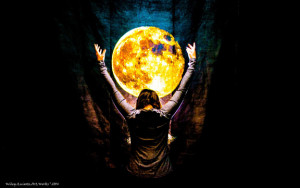
Barbara: Often your poems are about losses (such as the buildings “washed away by the sea” in “199 Steps to the Top of the Lighthouse” and the darkroom your father lost “to his own darkness” in “Coronado’s Trail”), yet your book as a whole is remarkably upbeat, and, it seems to me, life affirming, full of passion, energy, and desire. Did you intentionally choose such poems for this book, or is your work usually positive?
Kyle: Because I believe in the power of transformation, from dark to light, from despair to hope, that must come through. I’m always interested when people say what they do about the narrative being upbeat. I once had a psychologist scream at me for not acknowledging my family’s negative effect. I came to find it an interesting story, and one that had its origin in a specific time and place. Once I understood that and them, it had little to do with me, and more to do with them. And they were hardly boring. I cannot even imagine growing up with “normal” parents.
Barbara: In “Waiting in New Orleans” you mention “something unsaid” between Hawthorne and Melville. Your poems reveal some secrets about yourself and your family history, but is there “something unsaid” in your own work, some theme or topic you’ve shied away from? If so, why?
Kyle: Someone once asked me about how I got through the things I did, and my answer was “I always told the truth.” If you don’t have secrets, then there’s not much anyone can do to hurt you. There’s little I shy away from. There are things I might not shout about because I’m protecting someone else, but not myself. Because not much would shock me, I am the kind of person people talk to. I hear a lot of interesting things that I never write about. It all goes into the mix of understanding human nature, which is fascinating. But that being said, there are always secrets, ones you don’t even know. Like my maternal grandfather’s family claimed to be Scots and “Indian” as they called it. Well, they were Irish, not Scottish, but at the time if you could pass with a name that sounded Scottish, it was best to use it to your advantage because the Irish were looked down on. It was a variation of Dundee: Dundess. And recent research has the “Indian” showing up as “Mulatto” on a census. I’m still trying to track that down. Wildwood Villas had a covenant in all the deeds against anyone other than the Caucasian race living there. Talk about secrets.
Barbara: You allude in Wildwood to work by other writers, including the poet J.C. Todd’s Nightshade and a verse novel, Ludlow, about a deadly labor dispute in a Colorado mining camp. Are there poets or teachers that have influenced your writing?
Kyle: The first influences were the French Surrealists, especially André Breton. I diagrammed a number of his poems to learn how to layer and build images. After a while, I could see patterns. And I did study with Diane di Prima, a Beat poet, early on. Books mentioned in poems are often ones I’m reading at the time of writing, and there’s some connection to what I’m working on. I prefer the mention to a footnote.
I would have to say artists have influenced me more than writers. I have always looked for strong women in order to figure out how to live my life. Georgia O’Keeffe, Frida Kahlo, Emily Carr, and George Sand (the one writer in the group) come to mind as influences. I have always thought of writing as an outgrowth of how you lived. Create the life; then write about it.
Barbara: The titles of the poems in the book sometimes transport readers to specific times and places, such as “Nat King Cole and Pepe’s Cottage on the Bay 1961,” while other titles are wonderfully mysterious, such as “I Walk the Abyss” and “The River Is Hungry.” Do you choose your titles first or do they occur to you as you’re writing your poems?
Kyle: I always title a work after it is done, after the full concept of the poem has been developed. So, the poem determines the title. Sometimes I try to set a mood for the poem by the title so the reader has a frame of reference for what follows, and titles can do that without having to explain a lot in the poem. The more mysterious titles have a tendency to be philosophical in nature and often provide a link to the poems around them.
Barbara: Your poem “Dazed” is about your first experience of writing poems. What prompted you to begin writing? “Dazed” mentions “the bends / on the way to the surface,” during the process of writing. Does your writing still sometimes cause pain, or is this something associated more with your early work?
Kyle: That image came from the thought of the sheer volume of material and experience I would have to go through to get to any kind of truth, as if I could not hold my breath long enough to get there. The nice thing I discovered about poetry is you don’t have to do it all in one poem. You can take a whole book to do it.
I began writing seriously in my mid-twenties after being a dancer for years. The body wasn’t going to continue to cooperate. Since I’d written pretty consistently since grade school, teachers always encouraging me, I thought it was something I could do if I worked at it.
Barbara: You’ve sometimes written poetic sequences. Do you plan them ahead of time or do the poems coalesce around specific themes and situations?
Kyle: I would say both. I have finished a poem to find that it doesn’t tell all there is that is interesting about a subject, so have continued onto another, and another, an organic process. And I have started out with a very specific subject and structure in mind. I recently completed a 30/30 Project series for a Tupelo Press fundraiser, thirty responses to Zane Grey’s Desert Gold. That was conceived ahead of time. The structure, which consisted of text from the novel, responses to the text, and related historical and personal footnotes, really helped with writing and posting a poem every day.
Barbara: What has kept you writing for thirty years?
Kyle: I think I have a writer’s temperament. I’ve always been a meticulous observer, and while observing I often draw connections to other things. I see interrelationships, or make them up in my mind. I love to research. I enjoy it as much as writing. My sister recently spent two days in the County Clerk’s office in Cape May Court House (the name of a town, not just the building), NJ patiently sitting in a chair while I researched 300 years of deeds, drawing connections I had anticipated and those that were surprises. I dragged her to a cemetery at dusk to see the site of a mass grave for nine African American Union soldiers washed up on shore not far from where we grew up. She bragged to my brother about the cemetery, but not the two days in the stacks. It really is the adventure of discovery, coupled with the telling. I write easily. It’s the editing that is a slow go, as it should be. Poetry is my main medium. I love the rhythm and sound of words.
Barbara Daniels received a 2014 fellowship in poetry from the New Jersey State Council on the Arts, and one of her poems was selected for the 2013 Best of the Net Anthology. She is the author of a book of poems, Rose Fever, and the chapbooks The Woman Who Tries to Believe, Quinn & Marie, and Black Sails. She earned an MA at New York University and an MFA in poetry at Vermont College.

